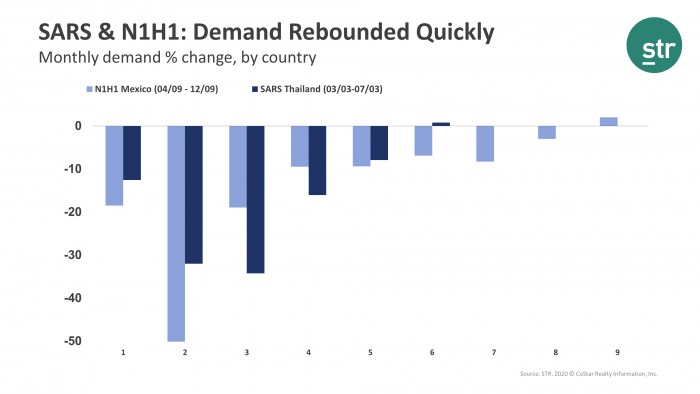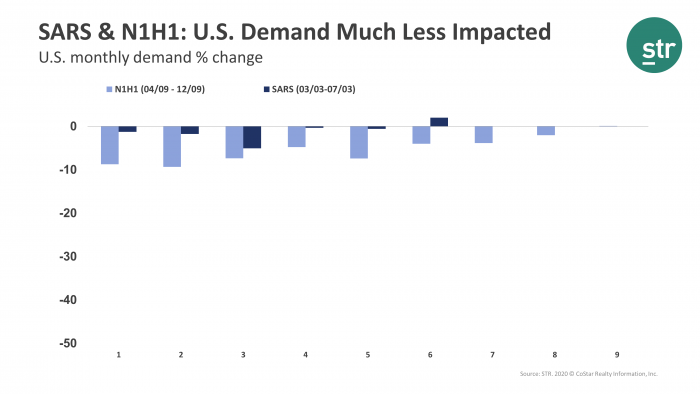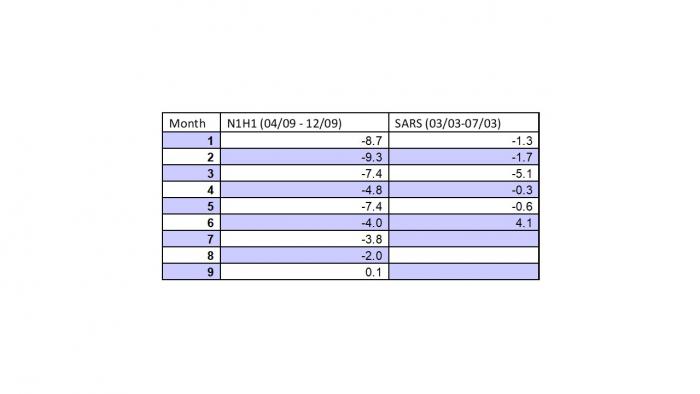To help answer that question, we look at the times around SARS and N1H1 (also referred to as ‘swine flu’) in 2003.
Below are the demand impact numbers for both of those events. The way to parse this data is to compare the impact by geographical region to gain a sense of impact near the source and then translate that impact into demand shifts in the U.S.
We chose as starting points hotel demand in Mexico to understand the N1H1 impact and Thailand for SARS (knowing, of course, that this was an Asia-wide situation).
Key points for those regions:
1. The situation gets much worse before it gets better.
2. The demand impact was actually fairly short-lived.
3. Demand started to grow again six and nine months after the WHO warnings.
4. Keep in mind that N1H1 in Mexico happened right after the Financial Crisis, which likely affected recovery times.


